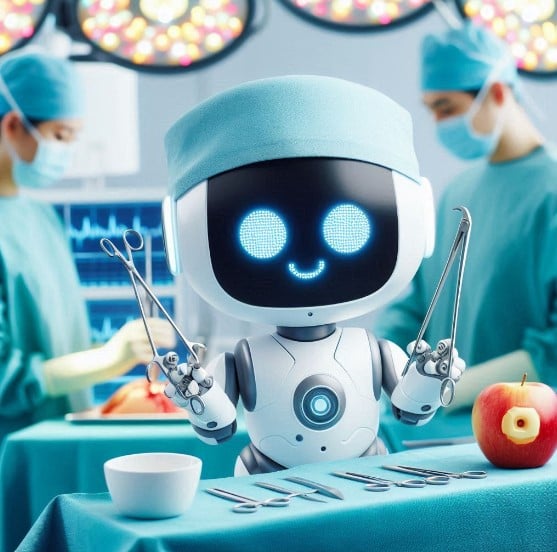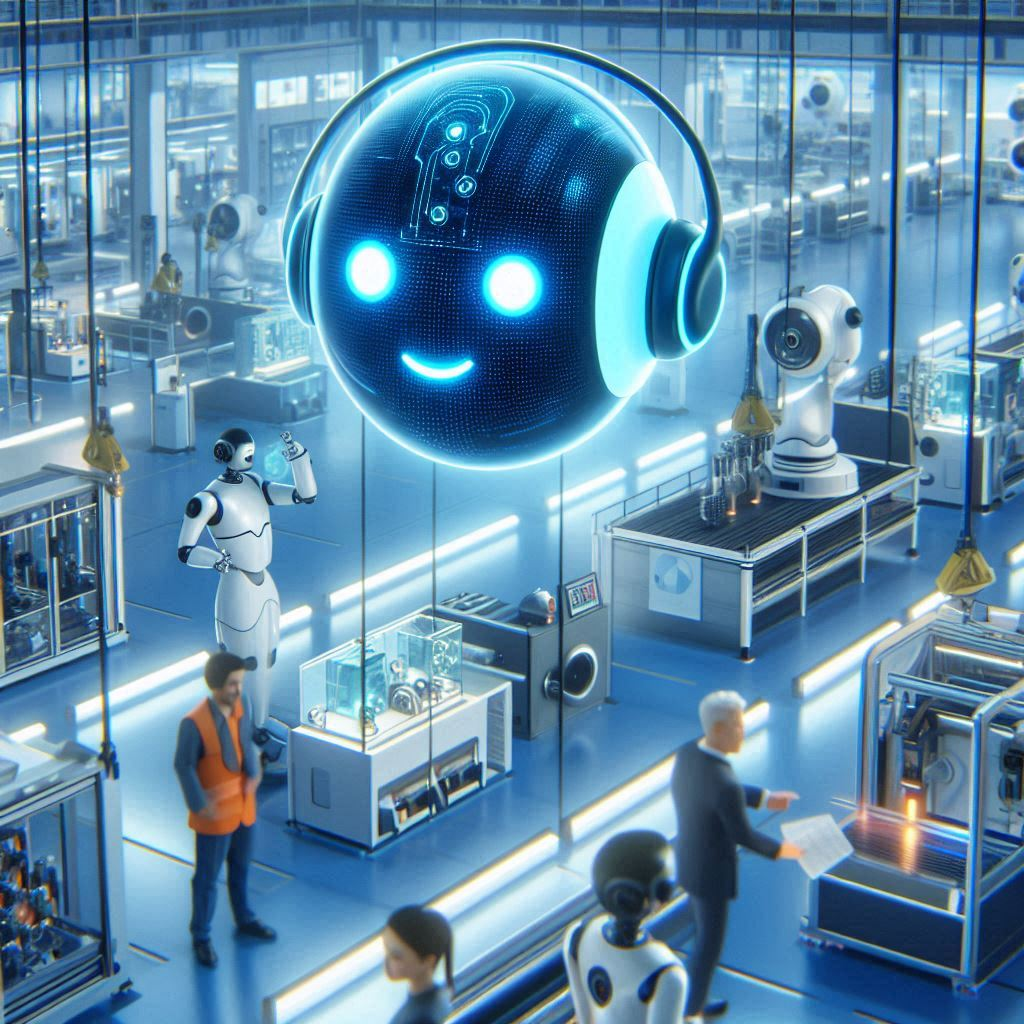Introduction
Robots are delivering packages to your doorstep, exploring the ocean to gather vital data, driving fully autonomous vehicles, and assisting surgeons in complex operations. This isn’t science fiction; it’s reality thanks to Artificial Intelligence (AI) in Autonomous Mobile Robots (AMRs).
AMRs stand apart from traditional robots. They don’t just follow set instructions; they adapt to their environment on the fly with a dynamic control system. Using AI in mobile robotics, these robots make smart decisions in real-time, reacting to their surroundings as they go. These are like smart machines that can decide how to do a job without constant human help.
The AMR market is booming. It was worth $1.24 billion in 2023 and is expected to triple by 2030, growing at a steady 13.4% each year (Next Move Strategy Consulting, 2024).
So, how does AI give these robots the power to navigate complicated environments and tackle a range of jobs on their own? AI makes robots smarter. They can learn and change, so they’re better helpers in lots of places. This means robots can do more than just follow rules.
Curious to see how AI and machine learning makes this all possible? Let’s take a closer look into the world of AI-powered AMRs and see how they’re changing the game.
AI’s Diverse Applications in AMRs
AI is driving remarkable advancements in AMRs, enabling these systems to solve complex problems across various fields. Let’s see five practical examples of AI in AMRs.
Revolutionising Supply Chain with AI-Powered Drones
AI-powered drones are set to transform package delivery by overcoming obstacles that have long hindered traditional drones. These smart drones navigate urban environments with precision, avoiding buildings and other obstructions while adjusting their routes based on real-time weather conditions.
TechnoLynx employs computer vision for obstacle detection and generative AI to calculate the best flight paths, factoring in live traffic and weather data. This approach enhances efficiency and safety, turning the idea of drone delivery into a viable reality.
The Delivery Drones Market size is estimated at USD 0.69 billion in 2024 and is expected to reach USD 1.75 billion by 2029, growing at a CAGR of 20.33% during the forecast period 2024-2029 (Mordor Intelligence, 2024).
Unveiling the Oceans with AI-Driven USVs

Exploring the ocean’s depths is becoming more accessible thanks to AI-driven Unmanned Service Vehicles (USVs). Unlike manned missions under total human control, which are costly and risky, these USVs autonomously navigate underwater environments, identifying hazards and collecting data.
Smart USVs integrate computer vision for underwater object detection and use Natural Language Processing (NLP) to facilitate communication with onshore teams. By leveraging IoT edge computing, these vessels process data on-board, enabling real-time decision-making.
As the global market for USVs is projected to reach $1.2 billion by 2028 from $0.8 billion in 2023 with a CAGR of 10.3%, AI is playing a crucial role in advancing marine exploration (MarketsandMarkets, 2024).
Conquering the Cosmos with AI-Equipped Rovers
Space exploration benefits immensely from AI-equipped rovers, capable of autonomously navigating and analysing the terrain of distant planets.
AI-powered rovers use machine vision to detect obstacles and create detailed environmental maps, while generative AI helps plan exploration routes based on sensor data. This technology has already proven its worth; NASA’s Perseverance rover, powered by AI, has successfully gathered rock samples on Mars.
These technological advancements make extraterrestrial exploration more efficient and effective, opening new possibilities for future missions.
Redefining Food Service with AI-Powered Kitchen Assistants
In the food service industry, AI-powered kitchen assistants are addressing labour shortages and enhancing operational efficiency.
These assistants use computer vision and deep learning to identify ingredients and monitor cooking processes, ensuring consistent quality.
Generative AI provides personalised recipe recommendations, taking into account customer preferences and dietary restrictions.
Additionally, NLP allows for seamless communication between chefs and robots.
The Future of Surgery with AI-Assisted Surgical Robots

AI-assisted surgical robots are revolutionising complex medical procedures by enhancing precision and reducing human error. Haptic technology in augmented reality (AR) interfaces provides surgeons with a realistic sense of touch, improving their ability to perform intricate surgeries. With the surgical robots’ market expected to reach $29.8 billion by 2025, AI is set to significantly improve surgical outcomes and patient care (Bajaj, 2024).
AI is making robots better at lots of things, like delivering things, exploring the ocean, going to space, serving food, and helping with surgery. TechnoLynx is helping solve complex challenges, making AI an essential component in the evolution of these autonomous systems. These smart robots will keep getting better and better, making all sorts of things easier and possible in many different jobs.
Challenges and the Road Ahead
While AI-powered AMRs are making impressive strides, there are still significant challenges to address before they can be widely adopted. Safety concerns remain a top priority, as autonomous systems must be robust enough to handle unexpected situations and avoid accidents.
Data privacy is another critical issue, especially as AMRs gather and process vast amounts of information in real time. Ethical considerations about how this data is used and protected are becoming increasingly important.
Additionally, regulatory hurdles can slow down deployment, as laws and guidelines for these advanced technologies are still evolving.
Ongoing research and development are tackling these challenges head-on. There’s a strong focus on improving human-robot collaboration to ensure that AMRs can work safely alongside people in various environments.
Researchers are also striving to make AI decision-making more transparent and explainable, which helps build trust and understanding.
Furthermore, developing fail-safe mechanisms is crucial for enhancing the reliability and safety of these industrial robots, ensuring they can operate effectively even under adverse conditions.
What TechnoLynx Can Offer
TechnoLynx stands out in the AMR landscape by offering tailored AI solutions that cater to the specific needs of clients. Our expertise in cutting-edge technologies allows us to develop sophisticated and customised systems for a wide range of applications.
Computer Vision
Our team excels in creating advanced object detection and recognition algorithms. For example, we can develop systems that enable AMRs to navigate around obstacles in dynamic environments or identify and categorise products in warehouse settings, improving both efficiency and safety.
Generative AI
We leverage generative AI to optimise path planning, detect anomalies, and predict maintenance needs for AMRs. This helps in enhancing operational efficiency, minimising downtime, and reducing the overall costs associated with maintenance.
GPU Acceleration
By designing GPU-powered systems, we ensure that AMRs can process data in real time. This capability is critical for applications that require immediate analysis and response, such as real-time obstacle avoidance or dynamic route adjustments.
IoT Edge Computing
Our solutions enable AMRs to perform on-board data analysis and decision-making, which is particularly beneficial in scenarios where connectivity might be limited. This allows for continuous operation without relying on constant external communication.
Natural Language Processing
We integrate voice control and natural language interaction into AMRs, making them more intuitive and user-friendly. This facilitates smoother collaboration between humans and robots, whether in industrial settings or public spaces.
AR/VR/XR
We help develop immersive training simulations for AMR operators, providing a hands-on experience in a virtual environment. We also enhance remote control capabilities with advanced visualisation, allowing operators to manage AMRs effectively from a distance.
With a team of experts in AI, robotics, and software development, TechnoLynx is well-equipped to handle complex projects and deliver innovative solutions. Our deep knowledge and experience ensure that we can meet the unique demands of each client, providing them with robust, scalable, and efficient AI-powered AMR systems.
If you’re looking to harness the power of AI for your AMR development projects, we are here to help. Contact us to discuss how our expertise can elevate your technology and drive your success.
Conclusion
AI’s integration into AMRs is poised to revolutionise various industries, from logistics and marine exploration to space missions and healthcare. This transformative technology offers unprecedented capabilities, enhancing efficiency, safety, and performance across a wide range of applications. As we look to the future, the impact of AI in AMRs will only grow, making everyday tasks easier and pushing the boundaries of what robots can achieve.
TechnoLynx is committed to leading this technological evolution, staying at the forefront of AI innovation for AMRs. We are dedicated to providing cutting-edge solutions that not only meet but exceed our clients’ expectations. The future of AI in AMRs is bright, and we are excited to be part of this dynamic journey, driving forward the possibilities of autonomous robotics.
References
-
Bajaj, R. (2024, March 6). AI-Powered Surgical Robotics Transforming Precision Surgery with Enhanced Accuracy and Patient Outcomes. LinkedIn. Retrieved June 15, 2024.
-
MarketsandMarkets. (2024, January 16). Unmanned Surface Vehicles Market Size, Share, Industry Report, Revenue Trends and Growth Drivers. MarketsandMarkets. Retrieved July 5, 2024.
-
Mordor Intelligence. (2024). Drone Delivery Market Size, Analysis & Statistics. Mordor Intelligence. Retrieved July 5, 2024.
-
Next Move Strategy Consulting. (2024, April). AMR Market Size and Share Statistics – 2030. Next Move Strategy Consulting. Retrieved July 6, 2024.













